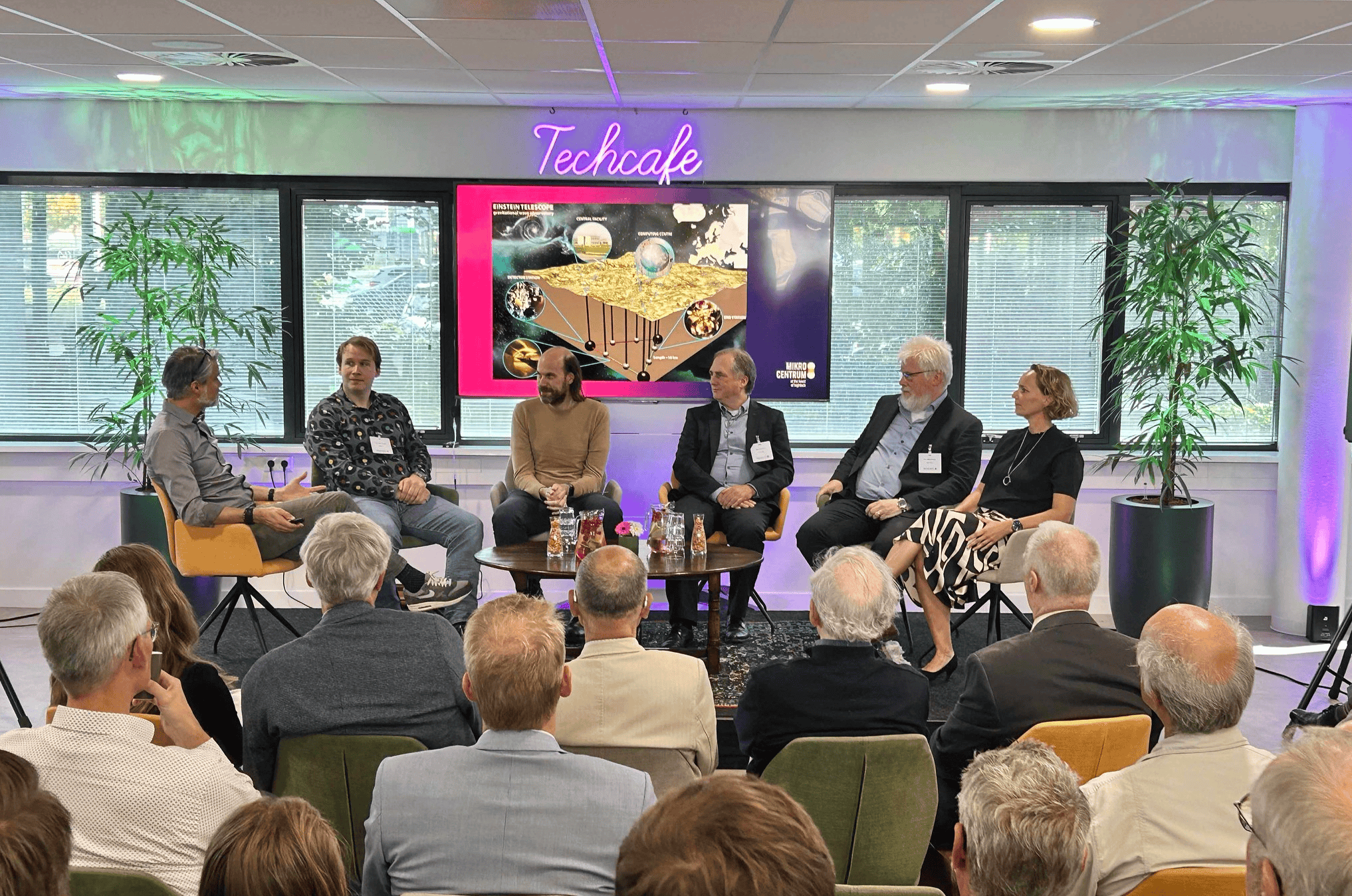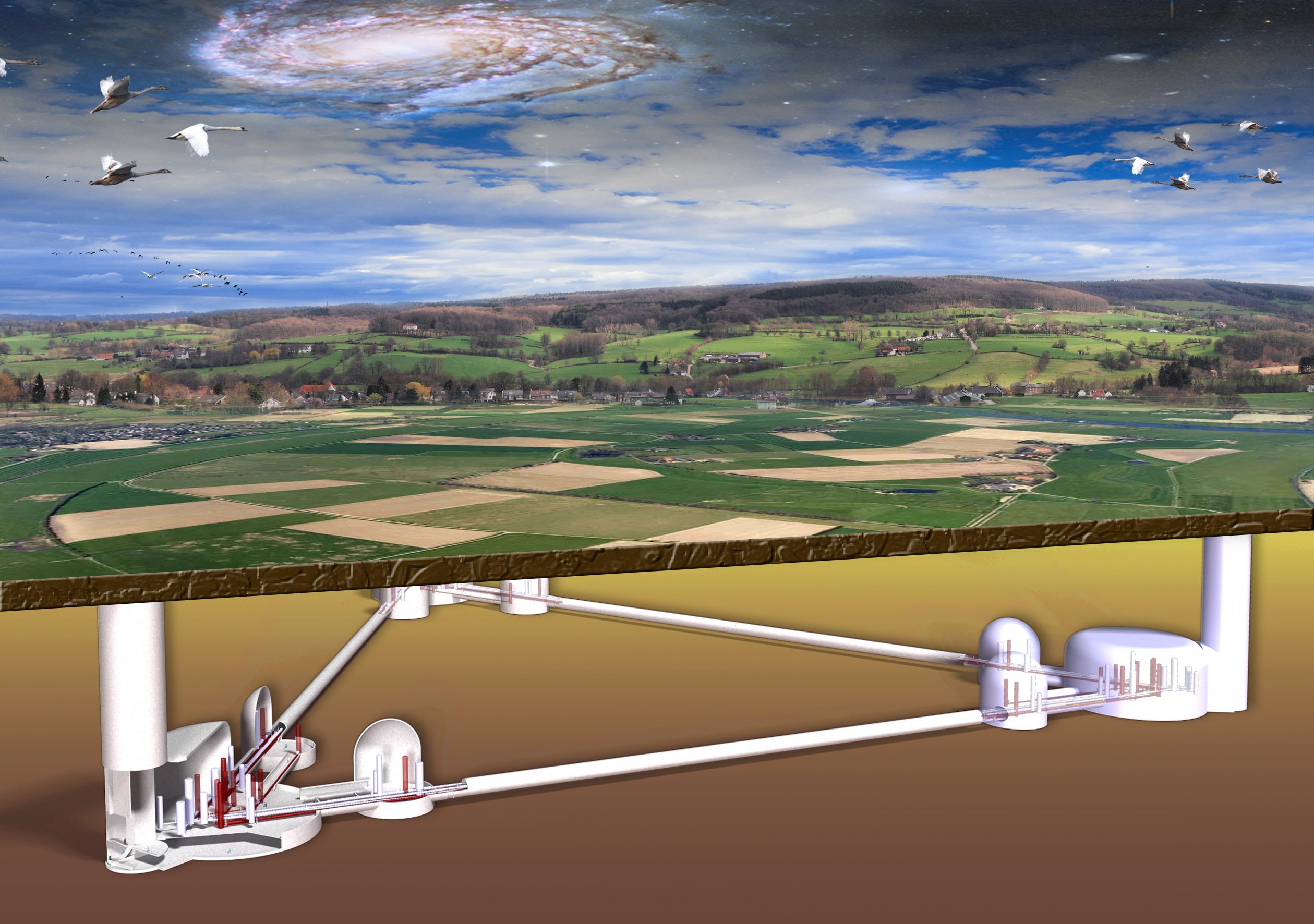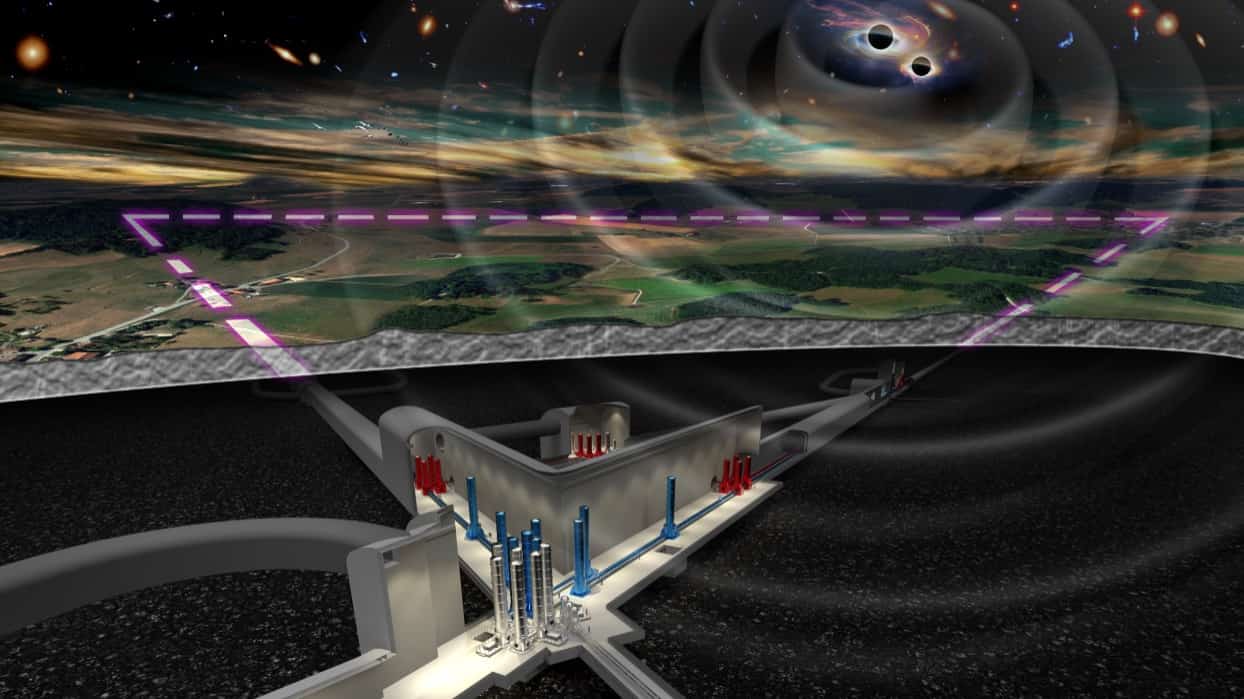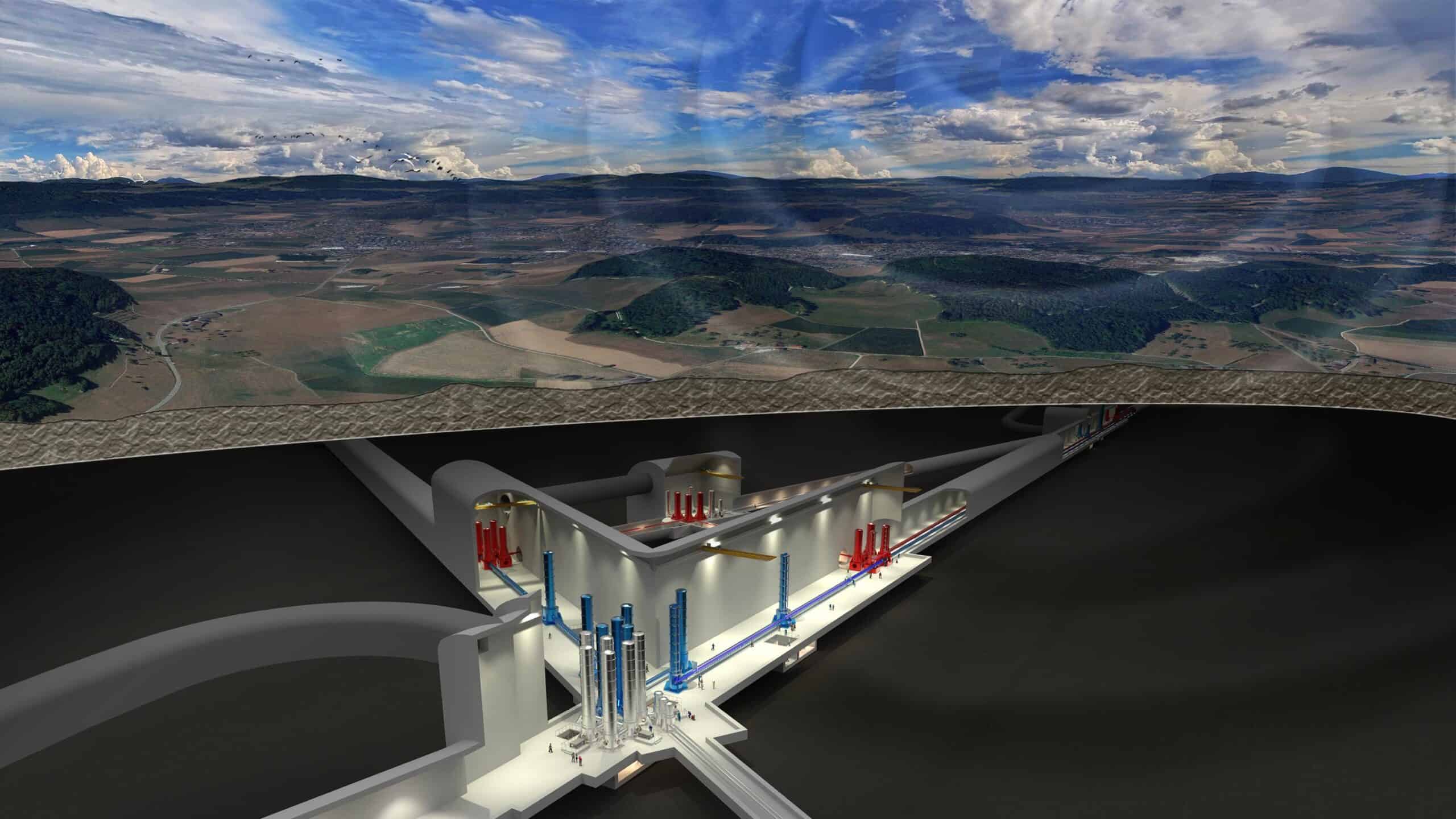
A scientific project is on the threshold of a breakthrough in the border region of southern Limburg. The Einstein Telescope, a hypersensitive detector for gravitational waves, is being planned at 250 to 300 meters underground. The device is named after theoretical physicist Albert Einstein, whose theory of general relativity provides the fundamental basis for measuring gravitational waves. This revolutionary gravitational wave detector promises to uncover the universe’s secrets further than ever. The project is promising but also brings technological and political challenges.
During the Techcafé on Sept. 12, experts discussed this project’s technical and practical aspects, in which the Netherlands, Belgium, and Germany want to bring the Einstein Telescope to the region jointly. Edwin de Zeeuw (Mikrocentrum) led the discussion with Jesse van Dongen (Mechanical Engineer at Nikhef), Freek Molkenboer (Senior Systems Engineer at TNO), Wout Broere (Professor at TU Delft), Ton Peijnenburg (Deputy General Manager at VDL Enabling Technologies), and Karin van Dalen (Business Development Manager at LIOF and BOM).

A telescope that sees beyond light
The Einstein Telescope differs from conventional telescopes by working not with light, but with gravitational waves. These waves are generated by catastrophic events such as the collision of black holes or neutron stars. The telescope, which consists of three underground tunnels, each 10 kilometers long, will be able to detect these cosmic ripples in spacetime with a precision a thousand times greater than current technologies.
According to Jesse van Dongen of Nikhef, the telescope offers a view that is further back in time than possible. “With current telescopes, we can only see the light of the early universe. The Einstein Telescope allows us to see beyond light, deep into the universe’s time when gravitational waves were created.”

Technological challenges
The construction of the Einstein Telescope below the triangulation point presents enormous technological challenges. The detector must be exceptionally sensitive, requiring an environment accessible from external vibrations and other disturbances. The South Limburg area offers suitable complex rock layers for this purpose, but it remains complex.
Wout Broere, professor at TU Delft and a specialist in underground space, spoke about the technical side of the project: “We have to drill tunnels through rock formations that we have barely explored. The accuracy of the tunnels is crucial to the performance of the telescope. A 10-kilometer straight tunnel sounds simple but requires advanced technology to align the structures perfectly.”
A field of pioneers
In addition to technological advances, the Einstein Telescope also offers opportunities for local businesses and scientific institutions. Ton Peijnenburg of VDL Enabling Technologies pointed out that this project parallels other high-tech projects. “The vacuum technology needed for the Einstein Telescope requires precision beyond what we know today in industry. This allows us to develop new technologies applicable elsewhere, such as in the semiconductor industry.”
Freek Molkenboer of TNO, responsible for the vacuum system, emphasized that this is one of the biggest challenges. “The Einstein Telescope will have the largest vacuum system on Earth. The air pressure requirements in the tunnels are similar to those of space systems. The smallest contamination can interfere with the measurements, so we must be cautious in the design and construction.”

Cooperation at the political and industrial levels
Karin van Dalen, business development manager at LIOF and BOM, emphasized the need for cooperation between different countries and agencies. “The Netherlands, Belgium, and Germany are working closely to make this project possible. It is not only a scientific project but also an opportunity for industry. New technologies developed here can reach other sectors, such as the semiconductor and space industries.”
Van Dalen also stressed the importance of political cooperation and funding. The National Growth Fund supports the project, which has already earmarked 870 million euros. In addition, the countries involved, including Belgium and Germany, are also expected to contribute. “This project is an opportunity for a region to take a technological lead while contributing to basic scientific research,” Van Dalen said.
Political decisions
Although the Netherlands, Belgium, and Germany are working together to bring the Einstein Telescope to Limburg, competition with Italy remains fierce. That country has bid to build the telescope in Sardinia. The final decision will not be taken until 2027; construction is estimated to take about 10 years.
The discussion also highlighted the importance of political decision-making. “This project requires not only technological expertise but also strong political cooperation,” Peijnenburg said. “If the countries involved do not provide the necessary funding and support, the project may go to Italy. But we have a unique opportunity in the Netherlands to play a crucial role in the future scientific landscape.”

